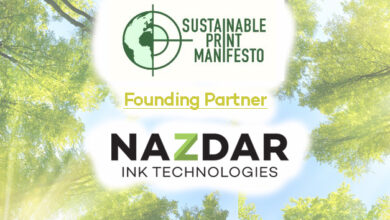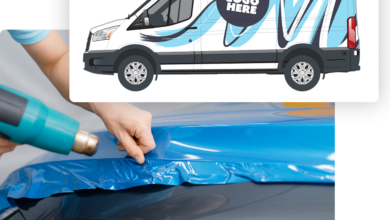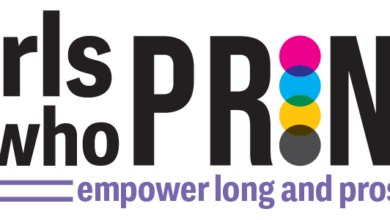Custom ink development is literally as old as the printing industry itself. Most people in the industry are familiar with the name Johannes Gutenberg. Gutenberg was the 15th-century inventor often referred to as the “Father of Print” for his development of the first known mechanical printing press. A lesser-known fact is that Gutenberg is one of the early pioneers of custom ink development. The inks commonly used in the 1440s, at the time of his invention, would not adhere well to the metal alloy he used as the transfer mechanism for his press. Additionally, the inks failed to transfer effectively to the vellum sheets being printed, resulting in smudging and requiring extended dry time.
The solution to Gutenberg’s problem was the first known oil-based ink, which was developed in his workshop using a combination of turpentine, walnut oil, and soot, as well as possibly some metallic compounds used to provide an intensity and sheen. This new ink solved both of Gutenberg’s problems. It was thick enough to stick to the transfer plates and still provide a quality print with a reasonable dry time, and it apparently looked fantastic compared to the other inks of the time.
The days of one-size-fits-all ink are now nearly as old as the Gutenberg Press. Throughout the history of the development of new printing technologies, ink innovation has been as critical to the success of new printing technologies as the machines themselves. Indeed, the two development processes go hand in hand. In the case of the early presses, the invention of compatible inks followed the development of the print mechanism to achieve the desired result.
Sometimes, this cycle of invention would cut the other way. Ultraviolet (UV) inks, for example, were first patented in 1969 by Sun Chemical. Some years passed before the mechanics caught up to chemistry, and the first UV printers were born. UV inks provided a superior platform for commercial use, as compared to solvent-based ink, reducing the volatile organic compounds released in the printing process and providing expanded applications. However, early UV printers were relegated primarily to printing barcodes and packaging labels. It was almost 30 years before UV printing as a total platform caught up, gained wide-scale use, and began to supplant prior technologies.
There are so many potentially unique applications to address through ink development, yet custom chemistry does not necessarily mean simply one-off inks created for a single purpose. Rather, a custom ink development project may yield an entire category of ink engineered for a new, narrower set of parameters. In order to generate profits, that narrower set of parameters must also address a large enough segment of the market to justify the development costs.
I began to wonder — how do companies that require custom chemistry select their development projects? How do they determine which projects to invest in that will make an industry impact sufficient to justify the expense of development?
Sanjay Maheshwari is the director of Kothari Infotech, a company that has continually developed printing technologies, software, and inks for over 20 years. Maheshwari had an interesting perspective on custom ink development and the criteria for selecting a new project.
“In attempting to develop any product that can redefine an industry, you must address a pain point. We always seek to understand the pain and address that pain first, which tends to narrow the scope,” said Maheshwari. “As it goes to ink development, we have a deep, fundamental understanding of the physics, chemistry, and pigments, so our objective is to apply those principles to solve the problem. Then, we begin to look at broader applications, and what changes can make the product more market-addressable.”
With all the technologies from the manual presses of the 15th century to automated offset, and now digital, the criteria for ink development have remained effectively the same — use the core principles of development in this space to address a problem or an unmet need.
As substrates, applications, and customer demands have evolved, we begin to see more highly specialized inks tailored to developing needs within the bounds of existing technology. Some of the primary drivers that can necessitate custom ink development processes include:
- Diverse substrates: From plastics, metals, and glass to textiles and 3D surfaces. Not all inks adhere equally.
- Improved durability: Outdoor, industrial, and specialty applications need inks that withstand abrasion, chemicals, UV, and other environmental factors.
- Regulatory & safety: Lower VOCs, food-safe inks, and region-specific regulations necessitate unique formulations.
- Color & effect innovation: Metallics, fluorescents, textures, and special finishes require novel chemistry that maintains compatibility with their mechanical counterparts.
Print quality, durability, color, environmental factors, machine compatibility, and extended longevity are all factors that can be addressed through custom development to improve final print outputs and machine performance.
Inside a custom ink development project
The custom ink development process will begin by identifying and establishing development parameters with a suitable manufacturer who has a verifiable track record of taking custom ink projects from concept to market. These early discussions are critical not only to the success of the project but also in defining the longer-term tenets of the relationship between supplier and vendor.
For example, all parties must be clear on who retains rights to the technology and define those rights very clearly. Often, if the manufacturer retains rights to the final product, the development costs can be much lower. On the flip side, the costs will typically be higher if the customer desires exclusivity to the final product and, perhaps, a subset of variants that sit within a certain set of parameters. Depending upon the level of complexity of the project, this can become a subject that requires substantial legal agreement and documentation.
Once the proper legal, financial, and intellectual property protections are in place, the work of developing a new ink can begin — and that all starts with fact-finding. This is typically defined in great detail through collective documentation and can include, among other information:
- A detailed description of the final application for the ink.
- Specific desired characteristics such as color, viscosity, distribution, and/or adhesive properties.
- Technical specifications of the delivery mechanism.
- Environmental storage and operating considerations.
Defining these parameters at project inception will ensure that all parties agree upon the desired outcomes and have defined the measures that will ultimately lead to a successful product acceptance and project closure.
A custom ink development project can take anywhere from a couple of weeks to six months or more, depending on the complexity of the application and if any of the groundwork has been laid with prior formulations. Modifying an existing base product to achieve a different viscosity, adhesive, or color property is one thing. Starting from scratch with a novel application is another.
The testing and approval methodology will vary greatly on the scope of the project and the equipment involved. One way to shorten the length of the project, if feasible for both parties, is to provide the ink manufacturer with the actual equipment for testing. This will reduce the back-and-forth of sending samples as the project develops. When this step is not possible, the manufacturer may opt to send a representative to the customer site, at least during the initial test phases, to observe the performance of the ink in person.
Multiple revisions of the formulation may be necessary to achieve the defined goals, but once the ink performs to customer specifications, the customer can begin the process of moving toward commercialization of their new ink technology.

The next wave of innovation in custom ink development
As with most technologies today, artificial intelligence (AI) may soon play a role in the custom ink development process. Applications of AI in this space could range from AI-driven formulation tools to predictive analysis that will allow formulators to model adhesive, curing, or durability behaviors on new substrates. This could drastically shorten development cycles, reduce waste, and generally produce better products faster.
Specialty applications such as conductive and functional inks for electronics or smart packaging, and perhaps nanoparticle development with metallic components, are other possible applications that will require substantive development but could become game-changers.
The future of custom development in the ink space is certainly exciting, and in today’s diverse, high-demand and ever-evolving print engines, ink chemistry has become a major differentiator for many businesses. The need for continuous development and pushing the bounds of ink chemistry is necessary not only in keeping up with emerging printer technologies but also in leading the way toward the latest developments in print.
Wherever there exists an opportunity to provide a novel application or a substantive improvement to existing technology, custom chemistry will be central to those developments.
How can a custom chemistry project potentially help your business?
- Are you developing a new hardware mechanism and looking for a compatible ink designed specifically for your hardware?
- Having difficulty printing on unusual or difficult substrates?
- Do you experience adhesion or durability issues?
- Are you looking to offer special effects or finishes that are unique to your brand?
- Do you need to meet specific regulatory or safety requirements?
If you answered yes to any of these, it may be time to talk to your supplier about designing specific inks tailored to your needs.




